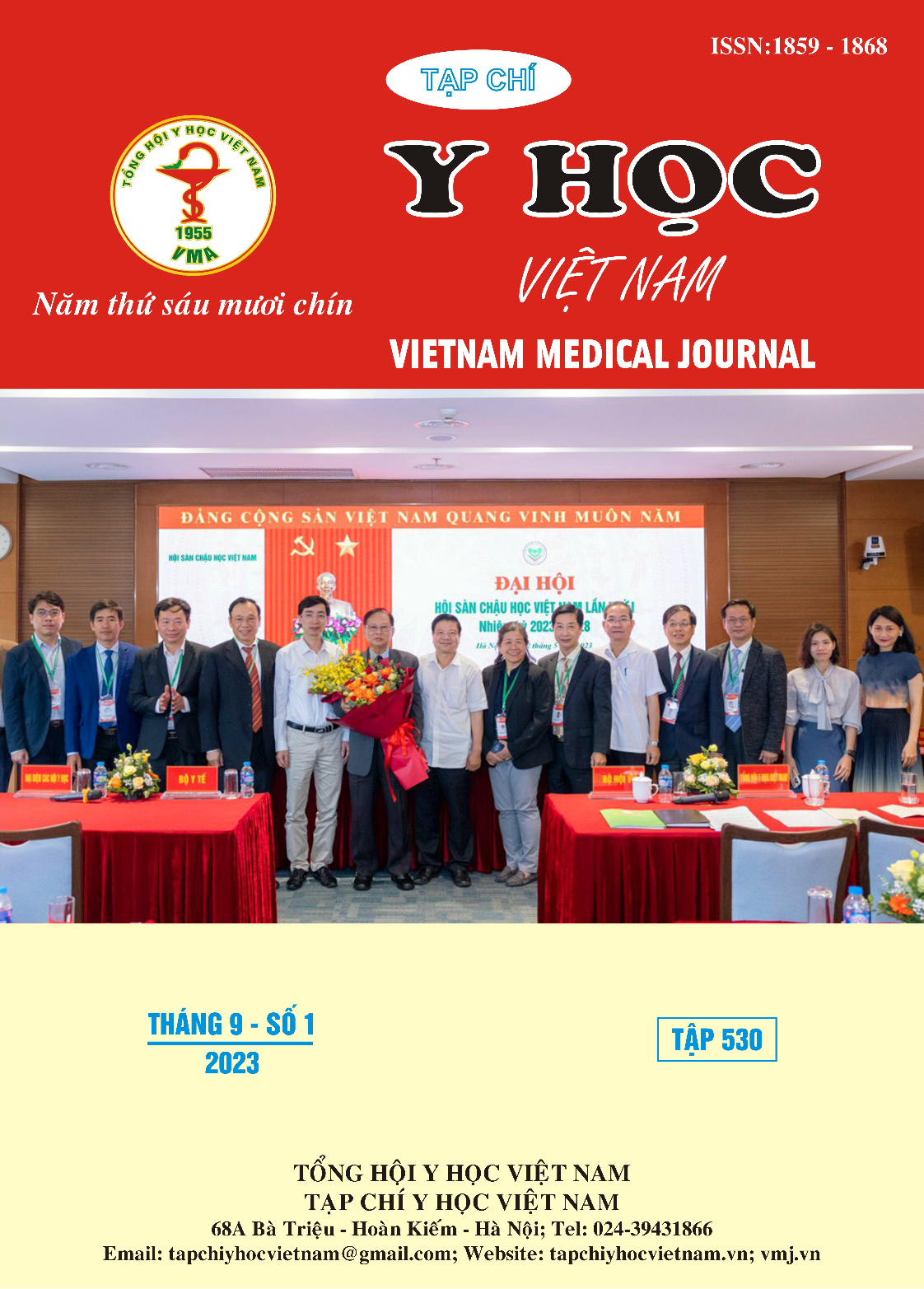CLINICAL AND PARACLINICAL CHARACTERISTICS OF INTERMEDIATE – HIGH RISK PULMONARY EMBOLISM PATIENTS
Main Article Content
Abstract
Background: Intermediate – high risk pulmonary embolism accounts for a relatively high portion of all hospitalized patients with the diagnosis of pulmonary embolism. These patients have the potential for pulmonary embolism – related complications and may required scale up the treament strategy, and then should be closely monitored. There are limited domestic data in Vietnam describing this target group recently. Objective: To describe the clinical and paraclinical characteristics of hospitalized intermediate – high risk pulmonary embolism patients. Patients and methods: A descriptive cross – sectional, retrospective and prospective study, from 01/01/2022 to 30/05/2023, at the Department of Cardiology, Cho Ray Hospital. Results: 75 cases was enrolled with an average age of 62,28 ± 17,28 years old, female accounted for the majority (64%). Obesity accounted for 28% and was also the most common risk factor. Dyspnea (84%) and tachycardia (74,66%) were the main symptom and sign. The mean PESI score was 105,76 ± 32,84 points. Most patients had elevated troponin and NT-proBNP. Sinus tachycardia (68%) was the most common ECG abnormality. All patients had right ventricular failure with a mean TAPSE of 14,19 ± 2,73 mm. Pulmonary artery thrombus was mainly distributed in the main branch (64,67%), 85,33% of patients had bilateral thrombosis. Deep vein thrombosis was observed in 60% of cases. Nearly one third of the patients had deteriorated clinical conditions during in-hospital stay. Conclusion: Intermediate – high risk pulmonary embolism mainly occured in elderly, female patients. Obesity may be associated with disease severity. In most cases, there were various manifestations of right ventricular failure on the paraclinical features. A high percentage of patients developed decompensation during follow-up. A better understading of clinical and paraclinical characteristics may be useful in better risk stratification and appropriate management
Article Details
Keywords
pulmonary embolism, venous thromboembolism, right heart failure
References
2. Bobadilla L, Scatularo CE, Antoniolli M, Lerech E, Cigalini IM, Zaidel EJ. Impact of Reperfusion on Clinical Outcomes in Patients with Intermediate-High Risk Pulmonary Embolism. Curr Probl Cardiol. Oct 2022;47(10):101308. doi:10.1016/j.cpcardiol.2022.101308
3. Droppa M, Zdanyte M, Henes JK, Gawaz M, Borst O, Rath D. Continuous low-dose thrombolysis in patients with intermediate-high risk pulmonary embolism: A retrospective analysis. Thromb Res. Jun 2023;226:33-35. doi:10.1016/j.thromres.2023.04.006
4. Kwok CS, Wong CW, Lovatt S, Myint PK, Loke YK. Misdiagnosis of pulmonary embolism and missed pulmonary embolism: A systematic review of the literature. Health Sciences Review. 2022/06/01/ 2022;3:100022. doi:https://doi.org/10.1016/j.hsr.2022.100022
5. Khan Z, Srour K, Khan MS, Ahmed TS, Siddiqui N, Assaly R. THE IMPACT OF OBESITY ON MORTALITY AND DISEASE SEVERITY IN PATIENTS WITH PULMONARY EMBOLISM IN UNITES STATES: A 13-YEAR NATIONAL ANALYSIS. CHEST. 2018;154(4):1017A. doi:10.1016/j.chest.2018.08.919
6. Hobohm L, Becattini C, Ebner M, et al. Definition of tachycardia for risk stratification of pulmonary embolism. Eur J Intern Med. Dec 2020;82:76-82. doi:10.1016/j.ejim.2020.08.009
7. Keller K, Beule J, Balzer JO, Dippold W. D-Dimer and thrombus burden in acute pulmonary embolism. Am J Emerg Med. Sep 2018;36(9):1613-1618. doi:10.1016/j.ajem.2018.01.048
8. Nguyễn Thị Tuyết M, Trần Thị Xuân A, Bùi Thế D, Trương Quang B. ĐẶC ĐIỂM LÂM SÀNG, CẬN LÂM SÀNG VÀ KẾT QUẢ ĐIỀU TRỊ THUYÊN TẮC PHỔI DO HUYẾT KHỐI TẠI BỆNH VIỆN ĐẠI HỌC Y DƯỢC THÀNH PHỐ HỒ CHÍ MINH. Tạp chí Y học TP Hồ Chí Minh. 2019;2(23)


